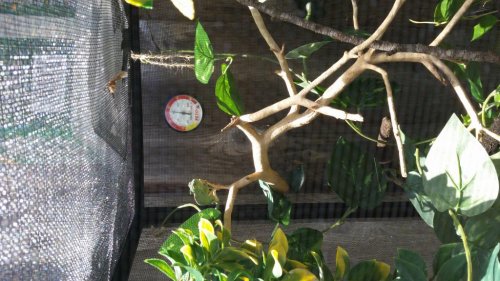Jakedn
New Member
This is about five feet wide by ten feet long or so. One end is a small shed that serves as my bug farm for crickets and soldier fly pupating bin. I currently have a trio of young Nosey Be’s in there. I have kept large panther chameleons too but I was afraid he’d eat my little ones so now I just have the three that are close in age and size. It is a joy to have this as my man cave type thing, where I can work with my crickets and stuff among the plants and chameleons crawling about. There’s a photo album on here that shows a few pictures of this cage. I don’t know how to link to it, but if you want bad enough I guess you could figure out how to see it.


Are all of the chameleons kept there males? Have you witnessed any social behaviours with them or do they just stay away from eachother? Do they perhaps confine themselves to their own personal territory of sorts to stay out of eachothers way? Are there multiple basking spots/feeding spots?
Last edited by a moderator:






